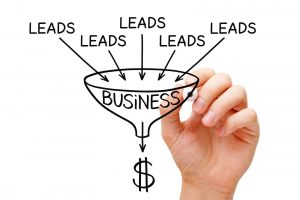You may not like me for saying this but…
You’re selling the wrong way.
“Alright, that’s cool. Thanks, Ruben — I’m leaving now!”
As I often tell my wife when she’s going out and I’m staying home with the kids: Wait! Don’t leave me! Before you click away, I need you to know this — I’m telling you the honest truth because I care about you and the success of your business.
It’s frustrating pouring time, money, and energy into chasing leads that fall flat. You’re parting with huge chunks of money every quarter supporting your sales staff in order to bring in new revenue. You’re gaining leads, but sometimes even the most promising leads aren’t converting into sales. Something’s wrong, but you don’t know what.
You’re tired, frustrated and your business can’t afford to keep hemorrhaging resources like this.
Now, it doesn’t have to.
I’m writing this blog post to give you three simple but crucial steps that will increase your sales conversion rate so that you can spend less money gaining more sales.
And with that, we’re off to our first step:
Step 1: Stop selling to the wrong people
If you’re first thought was, “There are no wrong people to sell to!” we need to talk for a moment. Here’s the outright truth that too many of us detrimentally resist:
Neither your business or mine is the perfect fit for every potential customer, and not every potential customer is the perfect fit for our businesses.
Personal experience has taught me that avoiding this reality is one of the top reasons for why companies waste time and money pursuing non-converting leads.
If you want to increase your sales conversion rate, you have to realize that very, very few products can be considered “universal:” and even those products have substitutes or people that just don’t use them!
This is why you can walk into a grocery store and choose from 10+ different options of toilet paper. (Well, you used to be able to do that. Everyone is ready for this pandemic to be over.)
Let’s look at Coca-Cola as an example:
This soft drink is intergenerationally beloved all over the world, but some people, (granted not very many), just don’t drink or buy Coke. Whether it’s due to the other soda options on the market or because they’re just not soda-drinkers, even a huge product like Coke doesn’t fit every single person.
The sooner you find and start selling to the “right people” that will buy, love and share your product, the better it will be for your marketing budget, sales revenue and sanity.
So, how do you find the right people?

In order to narrow down your target audience, we recommend building a Buyer Persona, which is a fictional person that embodies the essence of the people you want to sell to. Buyer personas help you identify who your target audience is, what they’re needs truly are and what ultimately drives their purchasing decisions.
While building Buyer Personas with clients, I’ve consistently seen them surprised by the attributes, motivations and characteristics of their target market. That’s why this process is worth pursuing — even if you think you know all about your target market, there’s always more to discover.
Building an Avatar
To create an avatar, name your fictional person, establish their demographics, (age, gender, marital status, children, profession, interests, etc.), and contemplate what needs they have that your product will meet.
Next, take time to dive into their emotional mindset: What drives this person? What motivates their decisions? What frustrations are they experiencing, and what are the key purchase drivers that will make them excited to buy your product?
Be as specific as possible when brainstorming your Avatar! We also recommend bringing your sales and customer service teams into the discussion — they have valuable feedback on who your product appeals to and who doesn’t really need it.
You can create two or three Avatars, depending on the varying demographics of your target audience. However, we don’t recommend creating more than four Avatars. If that’s the case, you’re most likely trying to sell to too many people.
Now that you know who you’re selling to, what their daily lives are like, and what their needs are, you’re able to move on to the next step that will increase your sales conversion rate:
Step 2: Start showing people the right benefits
Every salesman pitches customers the benefits of the products they sell.
That’s a no brainer, right?
But a significant portion of companies are pitching their customers the wrong benefits of their products and services — the ones that don’t really solve their client’s underlying problem.
For instance, the iRobot Roomba doesn’t just solve the problem of cleaning your dirty floors. Roomba solves the problem of freeing your limited time and preserving your limited energy without compromising a clean — and consequently stress-free — house.
That’s a much more compelling pitch.
Once you‘re well acquainted with your target audience’s needs, desires, and key purchase drivers, you’re ready to create a Before & After Transformation Grid to map out how your product or service will rock your client’s world.
There are five Before/After sections we use in creating a dynamic Before & After Transformation Grid, with each section becoming progressively deeper and more compelling. (We’ll use Roomba as an example to keep the purpose of each section clear):
- Have: what your client physically has before and after buying your product.
Before: messy floors. After: clean floors.
- Feel: how your product affects your client’s feelings.
Before: discouraged, overwhelmed, and stressed. After: relaxed, comfortable, and care-free.
- Average Day: how your product changes your client’s daily life.
Before: too busy to clean the house but frustrated with the mess. After: able to rest in a clean home without being burned out getting everything done.
- Status: how your product affects your client’s perceived status.
Before: overworked mom with a perpetually messy home. After: in-control mom with a picturesque home.
- Good vs. Evil: the solution your product brings to the battle at large.
Before: Forced to tolerate filth. After: No one should be forced to accept filth while living their lives to the fullest.
Step 3: Create a clear path to follow
Lastly, to successfully increase your sales conversion rate, you need a defined marketing strategy. While this strategy isn’t something you’ll communicate to your clients, it will create a clear path for them to follow.
Here’s what I mean by “defined marketing strategy.”
Map out the key steps a potential customer will experience on their journey from discovering your brand to buying your product. Then, intentionally smooth out the potential problems you find so that your customer’s journey is easy, logical and fun.
For example, they become aware by seeing a blog post and engage through scheduling a free consultation, make a small commitment when they meet with your company for 30 minutes, and next thing you know, they’re talking about you to all their family and friends.
I often use a dating analogy to bring home the point of why you want to ease into commitment with your clients. Normal people don’t propose the very first time they meet someone, (for instance, on a first date), so we shouldn’t do it in sales pitches either.
Now, I realize that all of these steps are harder to implement than they are to talk about, and you have a lot on your plate as it is. Here at 8 Signal, we’re passionate about enabling your company to experience what a strong conversation rate feels like once these strategies are in place!
So, if you’re struggling to implement these steps, or you have specific questions about any aspect of this blog post, contact 8 Signal today!







